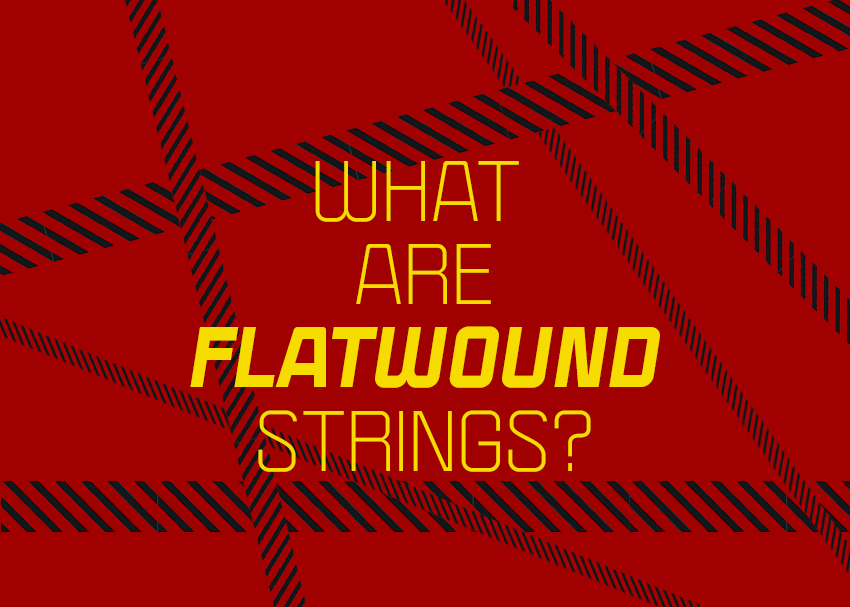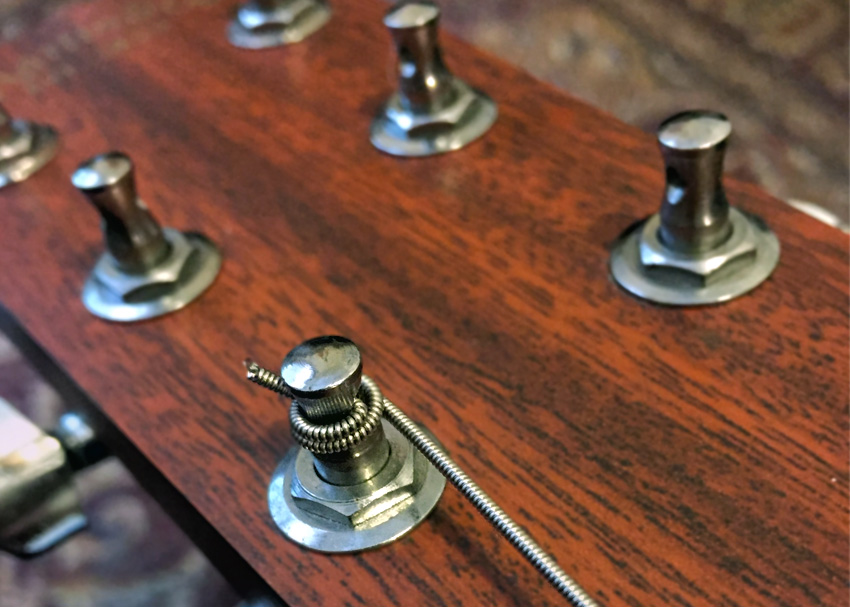You might have come across flatwound guitar strings or flatwound bass strings if you’ve been browsing online or in-store string sections. Or you might have heard about them from the mustachioed bebop guitarist at your local smoky jazz club. So what are flatwound strings? How do they sound? And are they really flat like fettuccine? How would that even work?
First, to debunk any truthers out there: flatwound strings are not two-dimensional or actually flat. The only thing flat about these strings is their winding. Both flatwounds and the more common roundwound variety are constructed the same way: with an inner core wire and an outer wrap wire that gets wound around it, from one end to the other.
Note: This wrap method is used for the fourth string and up. Sometimes, the third string will be wound in acoustic string packs or in heavy gauge electric string packs. The second and first strings are never wound.
So, What’s the Difference?
On roundwound strings, the wrap wire is round, like the shoelaces on a dress shoe. Now picture that shoelace tightly wrapping around a pen: the gaps between each turn of the wrap wire create little grooves. The little grooves on a guitar string are what make the pick slide sound possible. Go ahead, try it now!
In contrast, flatwound strings feature a wrap wire that is flat, like most sneaker shoelaces. The wrap wire turns leave no gaps and thus, the string feels smooth to the touch.

Why Do People Like Flatwound Strings?
Flatwound strings have several inherent benefits, and a couple of drawbacks when compared to roundwound strings. Some guitarists and bassists like the smooth feel of flatwound strings because they are easier to slide your fingers across and they feel “slick” or “fast.” This is especially helpful in some styles of jazz, where players might slide octaves up and down the fretboard a la Wes Montgomery. Another point in their favor: their lack of grooves helps resist the buildup of oils and gunk, and therefore, flatwound strings tend to last longer than roundwound strings.
Another draw to flatwounds is their distinctively warmer tone as compared to roundwounds. Their tone — especially paired with a large, hollow-bodied guitar — is what defines the sound of jazz guitar to many. Bassists who prefer to sit lower in the mix, providing rhythmic thump, also often prefer the reduced treble and warmer low end that flatwound strings provide.
Flatwound strings may not be for you if you’re seeking a bright, high-output tone, or if bending strings is a major part of your technique. Because of their frictionless feel, flatwound strings are often considered to be more difficult for players to bend. Also, if you’re very unfamiliar with guitar setup techniques like adjusting action and intonation, flatwounds may not be for you. They’re typically not offered in lighter gauges, so some adjustments may be necessary for your guitar to play its best with flats.
Related: Tips On Changing Guitar Strings
Need to change your strings? Whether it’s your first time or your hundredth time, do it better with these key tips! | Read »
Are Flatwound Strings Just for Jazz?
Is maple syrup just for pancakes? Should you only ever floss right before a dentist appointment? Of course not! “Flatwound strings are just for jazz” is a stereotype that ends here! The truth is that the distinctive tone and feel of flatwound strings has plenty to offer a variety of players. In fact, even The Beatles are reported to have used flatwound strings, especially in their early days. Anyone seeking the lo-fi character of early rock ‘n’ roll or blues music should definitely give flatwound strings a try. YouTuber Rhett Shull has a great video about this, as well as how flats can open you up to playing guitar in a new way.
What Kind of Flatwound Strings Should I Get?
While the selection of flatwound strings is not as daunting as it is for roundwound strings, there is still a lot to know. Whether you’re shopping for flatwound electric guitar or flatwound bass strings, the first thing to decide is whether this set is a “try-them-and-see” experiment, or if you want a premium, professional experience, because the difference in price can be vast. For the former, look for strings from large manufacturers like Ernie Ball and D’Addario, and if you’re looking to invest in something more boutique, strings by Thomastik-Infeld and LaBella are what you want.
So, are you curious enough to try flatwound strings yet? Hopefully you know more about what you can expect, and remember — if flatwound strings are not for you, you can always change them again!




